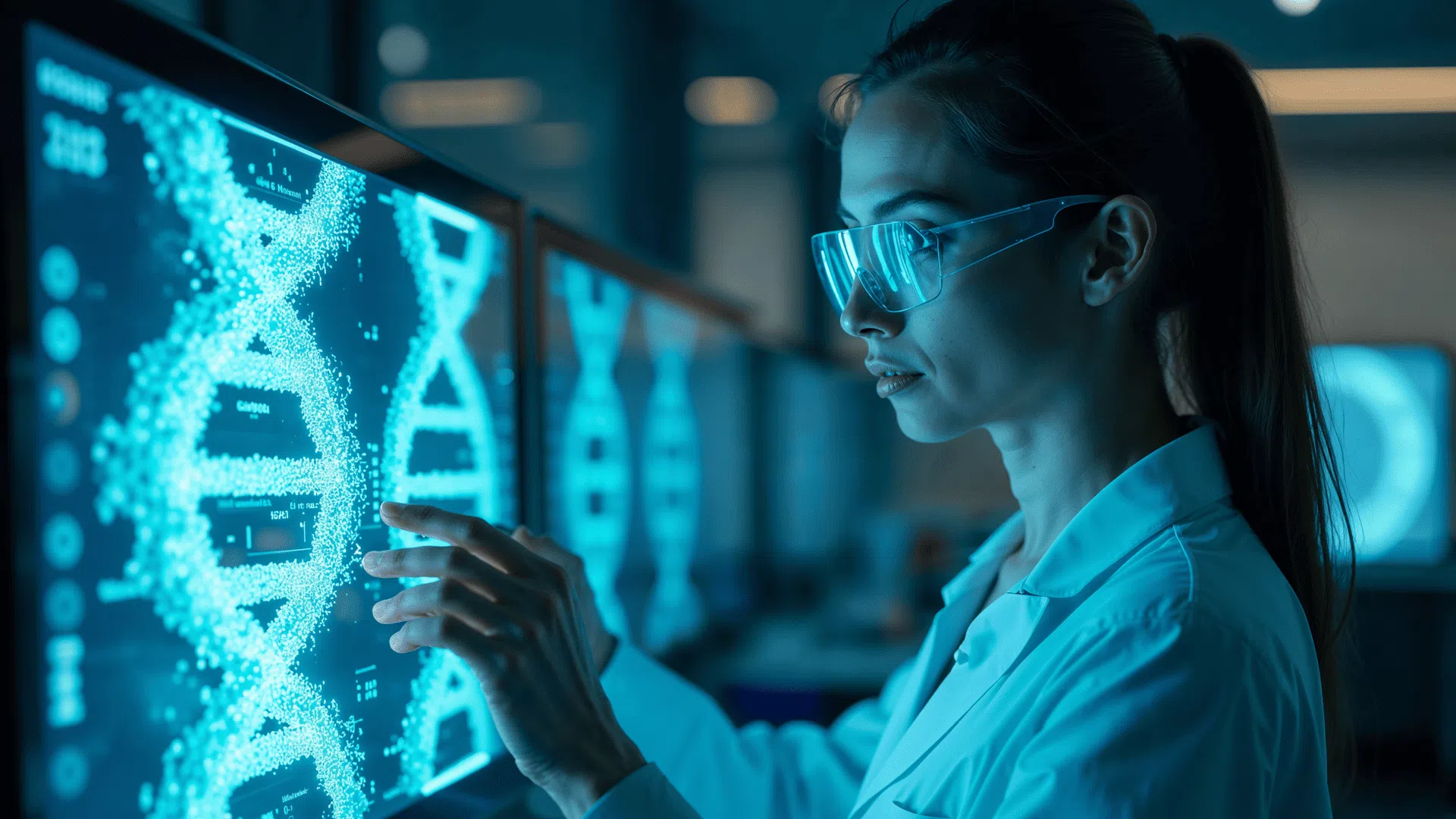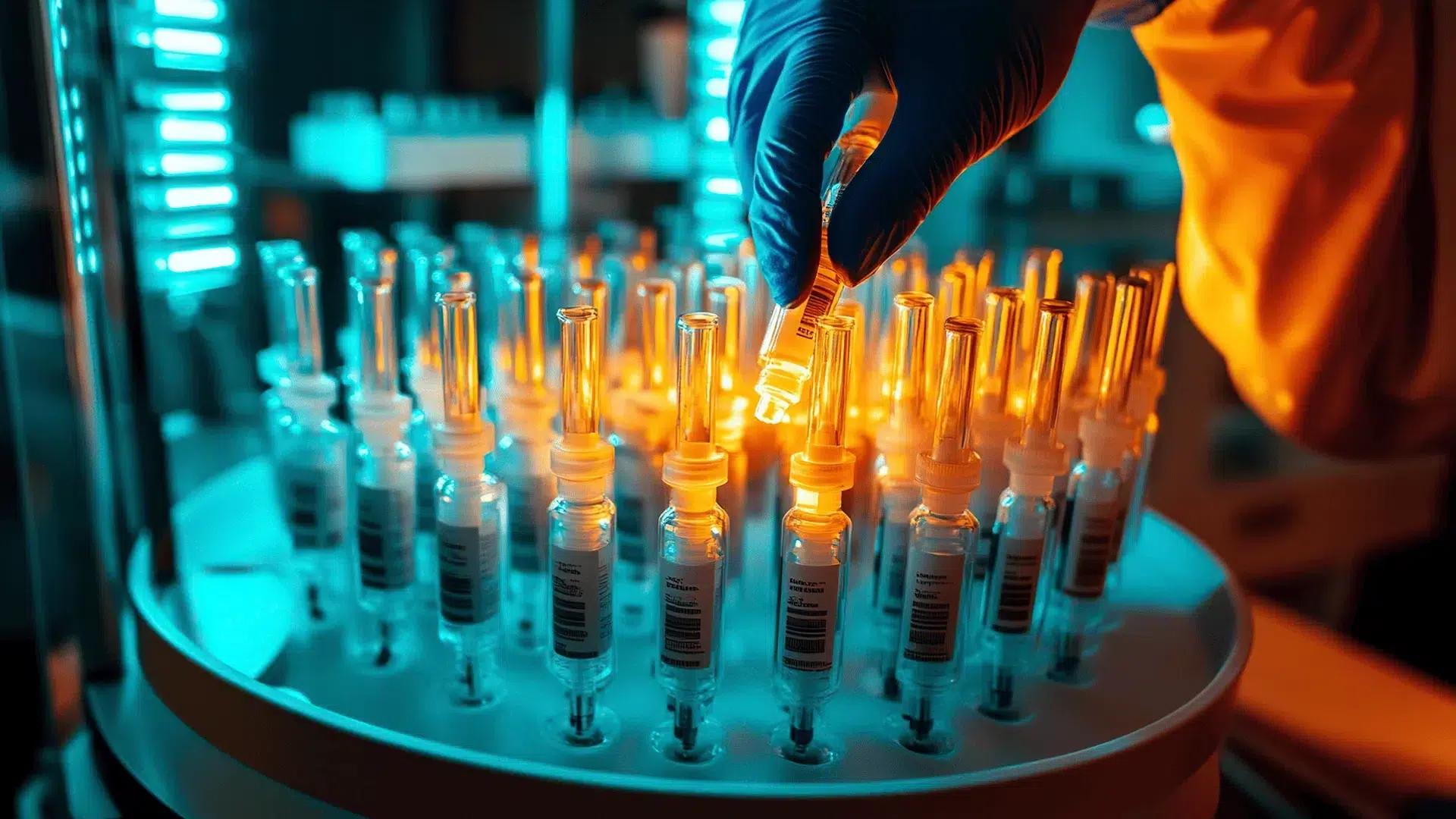CTL Europe GmbH replaces paper stacks with digital solutions from Yaveon.

Summary: Biotechnology is booming, but long development cycles and routine tasks slow progress and drive up costs. Digitalization – especially with ERP systems – helps structure and accelerate processes, enabling greater efficiency and faster time-to-market. It is a key factor for the industry’s future.
Within just a few months, new vaccines became reality – made possible by the mechanisms of biotechnology. From working with plant genomes to developing enzymes and flavor compounds, the biotech sector is flourishing. Yet biotech companies face the challenge of structuring and digitalizing complex, resource-intensive processes.
Lengthy development cycles hold back progress and increase costs. Routine tasks are typical time-wasters, tying up valuable resources that could otherwise go into research and innovation. To remain competitive, biotech firms depend on fresh ideas and fast time-to-market. Efficiency must increase – but how?
The key is digitalization. It offers the potential to simplify processes and reduce effort. The trend clearly points toward digital workflows. But what is the current status, and where is the industry headed? Why are digital processes so crucial for biotechnology – and how can they be implemented? Let’s explore the answers.
Digital tools and processes are already common in biotech. Often, the foundation is an ERP system – the digital backbone that automates core business processes. A good example is warehouse and logistics: regardless of the product type, ERP systems handle storage, organization, and shipping digitally. The benefits are clear: faster results, fewer manual errors, and greater efficiency.
But beyond these universal advantages, biotechnology offers highly specific use cases. Together, they form what can be described as the digital laboratory. The exact setup varies from company to company, but several trends are becoming increasingly prominent:
Smart Lab, Connected Lab – different names, same idea: a lab environment where devices, instruments, and systems are seamlessly interconnected. The goal is clear – information and data flow effortlessly, are consolidated centrally, and can be analyzed more effectively.
The results: higher efficiency, greater accuracy, and improved productivity. Biotech companies can coordinate research and lab processes more easily, and process data faster. This means more precise results – and faster ones.
What remains crucial is evaluation. In biotechnology, data volumes are immense, and analysis is complex. Tools like Microsoft Power BI help filter out what matters most and present insights in a meaningful way.
A connected lab also enables remote monitoring and control. Not every specialist needs to be on-site to identify or resolve an issue. Augmented reality and smart glasses make such tasks easier, helping companies get back up and running faster.
Even better: predictive maintenance. Here, digital systems detect anomalies before problems occur. In practice, this means biotech companies can maintain equipment proactively, optimize processes, and prevent downtime – protecting both efficiency and output.
Miniaturization is the process of reducing the size of existing structures while retaining their function – and in many cases, even their form. Sounds abstract? A look at everyday life makes it clear: not long ago, people needed separate devices to make phone calls, take photos, and listen to music. Today, one single device – the smartphone – does it all.
In biotechnology, this principle is applied in research, particularly in stem cell and process development. Miniaturization dramatically increases the number of experimental and analytical steps that can be carried out. The result: development and product cycles are significantly accelerated while requiring fewer resources.
To implement miniaturization successfully, companies must rely on automation and digitalization. They form the foundation for reducing manual steps. In practice, this often involves tools like lab glasses and robotic lab systems, which boost processing speed and automate tasks such as cell cultivation.
Big Data – handling large volumes of data – and Data Mining – automated evaluation of data – have become indispensable in the digital age. Closely related is Machine Learning: the ability of machines to learn independently and expand their knowledge base.
These technologies are increasingly applied in biotechnology. They make it possible to test multiple active ingredient candidates in parallel, raising the likelihood of finding the most suitable one. Data mining processes rely on artificial intelligence, which evaluates data not only quickly but also with high precision. When combined with machine learning, the benefits grow even further. The time savings: enormous.
For biotech companies, Big Data and Data Mining provide a significant competitive advantage – because time and speed are critical success factors. And when it comes to presenting results, Business Intelligence tools such as Microsoft Power BI make data analysis simple and effective – often with just a click.
Bioprinting is another trend already making its way into biotechnology. Specialized 3D printers are used to create biomaterials such as tissue or cell-based organs. The principle is similar to conventional 3D printing: organic substances are layered one on top of another until a three-dimensional structure emerges.
Virtual biotechnology is used when molecule reactions, combinations, or substances are simulated on a computer. In technical terms, these are known as in-silico simulations – processes that take place entirely in silico rather than in the lab. In biotechnology, they help clarify biochemical processes in living organisms, primarily in human organ cells.
Personalized medicine is traditionally associated with the pharmaceutical and medical technology sectors, but it is also gaining importance in biotechnology – especially in the field of biopharmaceuticals. These are advanced medicines developed using biotechnology, offering new ways to treat severe or even life-threatening diseases.
One key technique in this field is CRISPR-Cas. This molecular biology method allows DNA strands to be cut at precisely defined points. At these points, DNA components can be inserted, deactivated, or altered as needed. Such advances hold enormous potential for biotechnology and are set to shape the future of medicine for years to come.
Software is a must-have when it comes to digitalization – and in biotechnology, it unlocks enormous potential. Particularly valuable are ERP solutions, as they provide digital capabilities across nearly every business process – including functions tailored specifically for biotechnology.
From financial accounting to goods receipt and lot tracking: with our industry ERP solution Yaveon 365, biotech companies have the right tools at their fingertips.
It’s clear: digitalization in all its facets has already become a firm part of the biotechnology industry. But what’s in it for companies? Why should biotech firms make sure they don’t miss the train – and instead move ahead? Here are some of the most important benefits of digitalization in biotechnology:
Personalized medicine based on genetic data, new opportunities for drug development, and shorter research cycles – all of this enables more targeted diagnoses and individualized treatments. Instead of applying a “watering can” approach, therapies can be tailored specifically to each disease and each patient. The goal is to treat conditions more efficiently and effectively – and ultimately, to save lives.
Research happens worldwide, and the brightest minds and the latest equipment are spread across the globe. In the past, this meant that each team worked in isolation, and collaboration required time-consuming effort. Today, thanks to digitalization, researchers collaborate electronically across locations. Tools such as Microsoft Teams, Outlook, and other communication platforms transform a fragmented research landscape into a shared foundation.
The key to this collaboration: cloud solutions. They enable mobile working and seamless cooperation across sites. Any ERP system that aims to be future-ready should therefore be cloud-ready. Whether a private or public cloud is the better fit always depends on the specific case.
Another major advantage of digitalization in biotechnology is speed. With easier data sharing, experience exchange, and collaboration across locations, development cycles become shorter – and innovations reach the market faster. Simplified data analysis and simulations also accelerate research, enabling new insights in less time.
ERP systems – especially industry-specific solutions – add further support. R&D modules make it easier to develop and manage formulas and bills of materials, enable targeted production releases, and account for product characteristics. The combination is powerful.
Less effort, more efficiency, fewer manual errors: what sounds like a dream is made possible by automation and robotics. Repetitive tasks are ideally suited for robots – they don’t suffer from lapses in concentration or misunderstandings, which reduces error rates. Employees also save time, allowing them to focus on higher-value tasks such as production planning, production control, or other strategic activities.
Manual checks have their limits. Repetition, distractions, and even personal well-being affect concentration and create room for error. Robots and sensors, by contrast, follow fixed patterns with no deviations.
The driving force here is the Internet of Things (IoT). Sensors create connections between devices and automatically trigger actions where needed. A familiar everyday example: the smart fridge that detects when milk is missing and reorders it automatically.
In biotechnology, this means errors are avoided, production and lab processes can be monitored reliably, and results consistently meet the highest quality standards.
The secret to smooth business operations is good planning. Digital tools in general – and ERP solutions in particular – help companies maximize results. They consolidate company data and workflows centrally, while also initiating tasks automatically. This ensures more targeted processes, better resource allocation, and higher overall performance.
Another powerful option: low-code software such as the Microsoft Power Platform. This toolbox is especially suited for side processes that are tedious and time-consuming – and therefore ideal candidates for automation. The beauty of low-code: business users can build solutions themselves, without needing programming expertise.
Digitalization has already made its way into the biotechnology industry. Connected labs, miniaturization, and artificial intelligence are helping companies simplify their daily work and look to the future with confidence. The results are clear: faster processes and development cycles, new treatment methods, and safe workflows that free up time for core tasks. These mechanisms are already reshaping the role of humans in labs and production – automation systems such as robots are taking over manual work, shifting the focus from doing to monitoring.
Looking ahead, we can imagine scenarios where robots handle most of the work entirely or where augmented reality supports task execution. Employees will remain the final authority – validating information, ensuring quality, and making decisions.
Everything points to a digital future. For companies, leadership plays a crucial role in making this vision reality: consolidating workflows, fostering a culture of collaboration, and ensuring teams use the right digital tools. The ultimate goal: scientific breakthroughs. On a company level, this translates into staying competitive, achieving long-term success, and securing a place at the top. And who wouldn’t want that?
 Success story: CTL Europe – Beitrag öffnen
Success story: CTL Europe – Beitrag öffnen
CTL Europe GmbH replaces paper stacks with digital solutions from Yaveon.
 Lot tracking in the biotech industry – Beitrag öffnen
Lot tracking in the biotech industry – Beitrag öffnen
Seamless lot tracking, maximum transparency, and reliable compliance for biotech companies.
 Research & Development in biotechnology – Beitrag öffnen
Research & Development in biotechnology – Beitrag öffnen
How to increase efficiency and compliance in biotechnological research and development